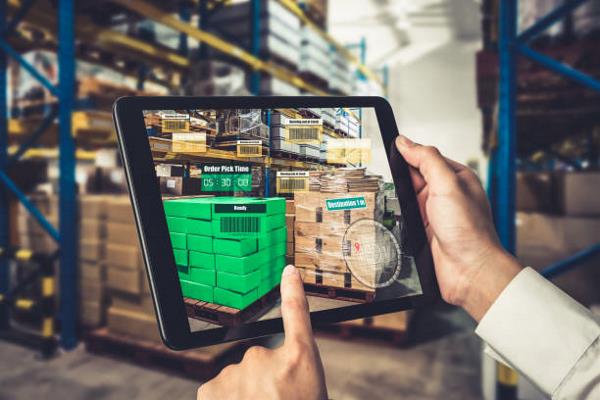Hololens-Mixed Reality in the workplace
Many companies are following Mixed Reality developments with interest, for applications such as remote editing and smart assembly. They would like to know "How can Mixed Reality generate added value in MY organisation?"
Centre of Expertise Digital Operations & Finance

Many companies are following Mixed Reality developments with interest, for applications such as remote editing and smart assembly. They would like to know "How can Mixed Reality generate added value in MY organisation?" To answer this question, the Research Group Smart Sustainable Manufacturing offers a practice-oriented series of workshops. This is a practical substantiation of our research into the role of Mixed Reality (MR) within Industry 4.0. In this workshop, we will experiment, in a playful and easily-accessible manner, together with companies in the region.
What is Mixed Reality?
Mixed Reality is a form of Extended Reality. Extended Reality (also known as XR) is an umbrella term for computer techniques, blurring the boundaries between the physical and digital worlds. At one end of the spectrum is Virtual Reality (VR). With this technique, the user is immersed in a completely digital world that does not care about its own reality. This often involves the use of VR glasses that completely block the view of the real world.
At the other end of the spectrum, closer to our physical experience, is Augmented Reality (AR). This technique projects a flat, digital layer over reality. This technology sometimes uses AR glasses, but can also use a smartphone or tablet. A well-known example is the game Pokémon-Go, or the app from furniture store IKEA that projects an image of a new sofa over a picture of your living room.
Mixed Reality is an intermediate form. This technique not only projects static information onto a screen, but forms interactive 3D projections (holograms) that can actually interact with their physical environment. For instance, it is possible to put a hologram on a (assembly) table, recognise an object and give it a different colour or adjust instructions to your environment or your actions.
All these areas are covered in the workshop, which uses a Hololens.
Hololens application
Mixed Reality, used in combination with smart glasses like the Hololens provides various options for 'operator support'. The physical and digital worlds are becoming increasingly intertwined. This technique lends itself to targeted, 'hands-free' and context-dependent interaction with complex systems and receiving information. Think, for example, of giving step-by-step assembly instructions, reducing search or measurement time in a system, doing remote inspections or take-downs.
Participate in workshops?
From a collaboration between The Hague University of Applied Sciences and the innovation platform SMITZH, we offer a workshop series for manufacturing companies within the region.
The question at the heart of our workshops is: "How can we let companies discover the possibilities of MR for THEIR organisation independently, using a HoloLens and a short introduction?"
Here, our focus is expressly on the independence of companies (because who knows a production process better than their own employees?) in discovering new application areas within their own sector and business practice.
The workshop consists of a plenary section explaining the basics of MR, followed by a week in which the company is provided with a HoloLens2 to independently try out different use cases in their own context. We do this to inspire and excite companies to come up with new insights that we can incorporate in our research and education.
So if you are, or know, a (manufacturing) company in the province of South Holland and are you interested in the opportunities that MR may provide for your company? Then contact our researcher Henk van der Burgh for an in-depth discussion.